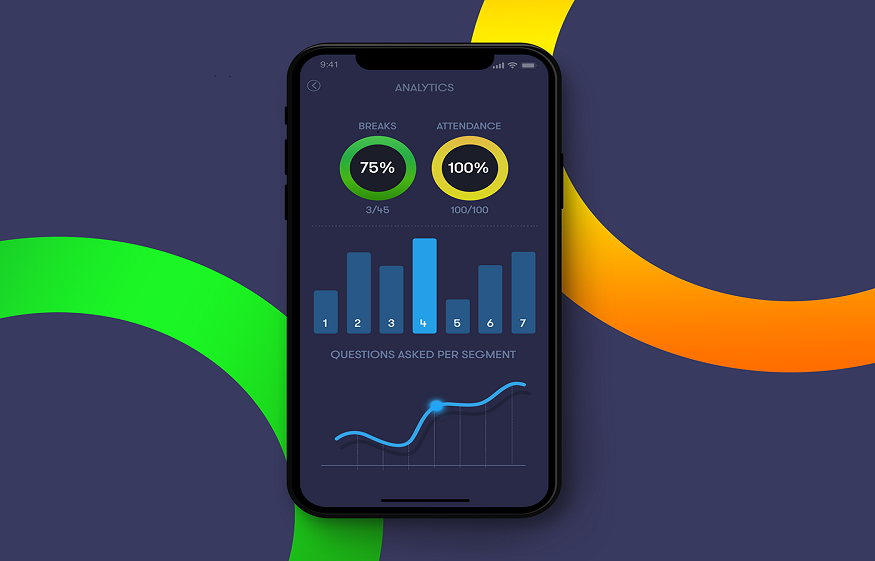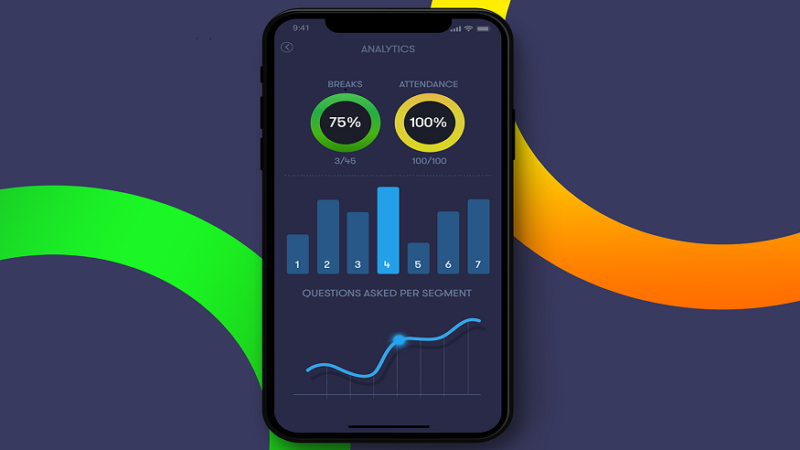In the digital age, simply having a beautifully designed website or app isn’t enough. What truly sets successful digital experiences apart is their ability to adapt and respond to user behavior, and that’s where UX analytics comes in. UX (User Experience) analytics bridges the gap between design assumptions and real-world user actions, providing a data-driven roadmap to better digital experiences.
This article dives deep into what UX analytics are, how they uncover insights into user behavior, and how product teams can turn these insights into impactful improvements.
What Is UX Analytics?
UX analytics refers to the process of collecting, measuring, and analyzing data related to how users interact with a digital product, be it a website, mobile app, or software platform. Unlike traditional web analytics that focus on broad metrics like traffic and bounce rate, UX analytics zooms in on how users navigate, where they struggle, and what influences their decisions.
The goal is simple: to better understand user behavior and use those insights to improve usability, functionality, and satisfaction.
Why UX Analytics Matter
User expectations are higher than ever. They demand seamless experiences—fast load times, intuitive interfaces, and minimal friction. UX analytics provides a clear lens into how actual users interact with a product, revealing:
- Points of frustration or confusion
- Features that users ignore
- Unexpected usage patterns
- Drop-off points in user journeys
- Clues to what users want but aren’t getting
Without this data, UX teams are essentially designing in the dark. With it, they’re empowered to create optimized experiences that drive engagement, retention, and conversions.
Key Metrics in UX Analytics
UX analytics goes beyond vanity metrics and dives into behavioral indicators. Here are some of the most insightful metrics:
1. Click-Through Rates (CTR)
CTR measures how often users click on a specific element (like a button or link) compared to how often they see it. It’s a clear signal of engagement and interest. Low CTRs often point to poor visibility, unclear calls-to-action, or mismatched intent.
2. Session Duration
Longer sessions may indicate deeper engagement, while very short ones could suggest users didn’t find what they were looking for. However, session length must always be evaluated in context—some actions are quick by nature.
3. Heatmaps
Heatmaps visually display where users click, scroll, or hover. They help answer questions like:
- Are users clicking non-clickable elements?
- How far down a page are they scrolling?
- Are important CTAs being missed?
Heatmaps uncover usability issues that traditional analytics can’t.
4. User Flows
User flows track the path users take through your product. These help identify where users start, where they go next, and where they drop off. They’re incredibly useful for diagnosing broken journeys.
5. Form Analytics
If your website or app has forms (e.g., checkout, contact, signup), UX analytics can show which fields are abandoned most often, how long users spend filling them out, and what errors occur. This data is key to improving conversion rates.
Behavioral Insights from UX Analytics
So, what exactly can UX analytics reveal about user behavior? Here’s a breakdown of common behavior patterns uncovered by smart analytics tools.
1. Users Don’t Always Follow the Path You Expect
UX analytics often reveals that users aren’t navigating as designers predicted. For example, they might be clicking a logo expecting it to perform an action it doesn’t, or bypassing the “Start Here” button entirely.
By mapping real user flows, teams can restructure navigation to better align with user expectations.
2. Users Abandon When Frustrated
If heatmaps show users clicking repeatedly on a non-clickable element or form analytics show frequent input errors, that’s a clear sign of frustration. These micro-frustrations might seem minor, but can collectively lead to high abandonment rates.
UX analytics helps pinpoint and remove these friction points.
3. Users Gravitate Toward Simplicity
Complex layouts, cluttered interfaces, and information overload often lead to confusion. By comparing engagement rates across simple vs. dense pages, teams can determine what design principles resonate most with users.
4. Small Details Drive Big Decisions
Sometimes, a single word change in a CTA button can double conversions. UX analytics helps test these micro-changes through A/B testing, revealing which variations impact decision-making most.
5. Scroll Depth Reveals Content Engagement
Are users actually reading your content or just skimming the top? Scroll depth heatmaps tell you how far down users scroll on a page, which is a proxy for content engagement. Pages with steep drop-offs may need better formatting or stronger lead-ins.
UX Analytics Tools You Should Know
The right tools can make or break your ability to collect actionable UX data. Here are some popular platforms used by UX designers, marketers, and product managers:
- Hotjar – Best for heatmaps, session recordings, and feedback polls
- Crazy Egg – Focuses on click tracking and scroll heatmaps
- Mixpanel – Offers in-depth behavioral analytics and cohort tracking
- Google Analytics (GA4) – While broader than UX, GA4’s event-based tracking model can reveal detailed user interactions
- FullStory – Records user sessions and offers powerful debugging tools
- Amplitude – Ideal for product analytics and user journey analysis
These tools help you move from raw data to real insight.
Real-World Applications of UX Analytics
Let’s look at how companies are leveraging UX analytics to drive tangible improvements.
Case Study 1: E-commerce Checkout Optimization
An e-commerce platform noticed a significant drop-off at the final checkout stage. UX analytics revealed that a mandatory phone number field was causing confusion and bounce.
Case Study 2: SaaS Onboarding Improvements
A SaaS startup was struggling with user activation. Heatmaps and session recordings showed that users skipped over the onboarding modal and went straight to the dashboard, leading to confusion.
They redesigned onboarding to be more interactive and embedded it within the dashboard itself.
Case Study 3: Content Engagement on a Blog
A tech blog noticed users weren’t scrolling beyond the first 25% of the page. UX analytics showed that the intro paragraphs were too long and lacked hooks.
By reformatting the articles with shorter paragraphs, pull quotes, and more visual breaks, they saw a rise in scroll depth and average session time.
Turning UX Data Into Action
Collecting data is just the beginning. The true value of UX analytics lies in what you do with the insights. Here’s how to go from raw numbers to real change:
1. Prioritize Issues Based on Impact
Not every UX issue is worth fixing right away. Focus on high-impact areas—like checkout processes, onboarding experiences, or high-traffic landing pages—where small tweaks can bring big results.
2. Combine Quantitative and Qualitative Data
UX analytics provides the “what.” User surveys and feedback provide the “why.” Use both to validate your assumptions and build a richer understanding of behavior.
3. A/B Test Thoughtfully
Use insights from UX analytics to form hypotheses and test them. For example, if a CTA has low engagement, test a new placement or copy. Keep variables controlled and learn from every test.
4. Iterate Continuously
UX isn’t a one-and-done project. User expectations and behaviors evolve. The best teams treat UX improvement as a continuous loop: analyze → test → learn → refine.
Common Pitfalls to Avoid
While UX analytics is powerful, it’s not infallible. Avoid these common mistakes:
- Over-relying on surface-level metrics – Metrics like time-on-site can be misleading without context.
- Misinterpreting intent – Just because users click something doesn’t mean they’re satisfied.
- Ignoring mobile behavior analytics – Always segment data by device; mobile UX challenges differ greatly from desktop.
- Failing to act – Data without action is just digital clutter. Don’t let insights sit idle.
The Future of UX Analytics
As technology evolves, so does UX analytics. The future is moving toward AI-powered tools, predictive behavior modeling, and real-time personalization. Instead of reacting to user behavior, teams will begin anticipating it.
Expect deeper integration between UX data and product roadmaps, where every design decision is backed by evidence, not assumption.
Final Thoughts
Understanding user behavior is no longer a luxury—it’s a necessity. UX analytics empower digital teams to design with confidence, make informed improvements, and deliver experiences that truly resonate with users.
If you want to build a product that users love, start by listening to what their actions are telling you. That’s the real magic of UX analytics.
With Nudge, you can turn UX analytics into actionable insights. Our AI-driven platform analyzes user behavior in real-time, enabling you to craft personalized experiences that keep users engaged.
Book a demo today and see how Nudge can help you leverage UX analytics to optimize your user experience and drive growth.










